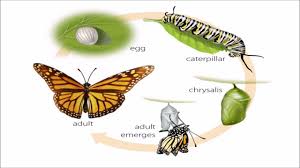Environment Notes On – Metapopulations – For W.B.C.S. Examination.
পরিবেশ নোট – মেটা পপুলেসেন – WBCS পরীক্ষা।
Most natural populations consist of many subpopulations occupying patches of suitable habitat surrounded by unsuitable environments. Oceanic islands and freshwater ponds are obvious examples.Continue Reading Environment Notes On – Metapopulations – For W.B.C.S. Examination.
But fragmentation of forest and other natural habitats resulting from clearing land for agriculture or urban development is increasingly creating fragmented populations in many other kinds of habitats. These subpopulations are connected by movement of individuals, and the set of subpopulations is referred to as a metapopulation. Metapopulations have their own dynamics determined by the probabilities of colonization and extinction of individual patches. A set of simple metapopulation models describes changes in the proportion of patches occupied (). When the extinction probability (e) of an individual patch is independent of p, the rate of loss of subpopulations is simply pe. The rate of colonization is proportional to the number of patches that can provide potential colonists and the proportion of empty patches that are available to receive them. Hence, colonization is equal to cp(1-p), where c is the rate of colonization.
The metapopulation achieves a steady state of number of patches occupied when colonization balances extinction, that is pe = cp(1-p), or p̂ = 1-e/c. In this model, as long as the rate of colonization exceeds that of extinction, the metapopulation will persist. In more complex models, particularly when the probability of population extinction is reduced by continuing migration of individuals between patches (which keeps the sizes of subpopulations from dropping perilously low), the extinction rate and colonization rate both depend on patch occupancy. In this case, the solution to the metapopulation model has a critical ratio of colonization to extinction, below which patch occupancy declines until the metapopulation disappears. Thus, changes in patch size or migration between patches can cause an abrupt shift in the probability of metapopulation persistence.
Predator-Prey Interactions
The dynamics of populations are influenced by interactions with predator and consumer populations. Because these interactions have built-in lag times in population responses, they often result in complex dynamics. Among the most spectacular fluctuations in size are those in populations of snowshoe hares and the lynx that prey on them. Population highs and lows may differ by a factor of 1,000 over an oscillation period of about ten years. Oscillation periods in other population cycles of mammals and birds in boreal forest and tundra habitats may be either approximately four years or nine to ten years.
The biologists Alfred Lotka and Vito Volterra independently developed models for the cyclic behavior of predator-prey systems in the 1920s. The most basic model expresses the rate of increase in the prey population in terms of the intrinsic growth capacity of the prey population and removal of prey individuals by predators, which is proportional to the product of the predator and prey population sizes. The growth of the predator population is equal to its birth rate, which depends on how many prey are captured, minus a density-independent term for the death of predator individuals. The joint equilibrium of the prey and predator populations is determined by the predation efficiency and the relative rates of birth and death of the prey and predator, respectively. However, the equilibrium is neutral, which means that any perturbation will set the system into a persisting cycle. More complex models of predator-prey interactions include a balance between various stabilizing factors, such as density-dependent control of either population, alternative food resources for predators, and refuges from predators at low prey densities, and destabilizing factors, such as time lags in the response of the predator and prey to each other. For the most part, these models predict stable predator and prey populations under constant conditions.
Both empirical and experimental studies have shown that the rate of predation is nonlinear, violating one of the assumptions of the Lotka-Volterra model. When predation is inefficient at low prey densities and predator populations are limited by density-dependence at high predator densities, there may be two stable points. One of these is at a high prey population level limited by the prey population’s own food supply, the other at a low prey population level limited by predators. When a prey population, such as a crop pest, is released from predator control following depression of the predator population by extrinsic factors such as climate, disease, pesticides, and so on, the prey may increase to outbreak levels and become a severe problem. Thus, agricultural practices that incidentally depress the populations of natural control organisms can have unwanted consequences.
A special kind of predator-prey model is required to describe the interactions between parasites, including disease-causing organisms, and their hosts. These models need to take into account the fact that parasites generally do not kill their hosts, that the spread of parasites among hosts may depend on population density and the presence of suitable vectors, and that hosts may raise defensive immune reactions. Immune reactions create a time lag in the responses of parasite and host populations to each other and may result in strong fluctuations in the prevalence of parasitic diseases.
Please subscribe here to get all future updates on this post/page/category/website


 Toll Free 1800 572 9282
Toll Free 1800 572 9282  mailus@wbcsmadeeasy.in
mailus@wbcsmadeeasy.in



















































































































